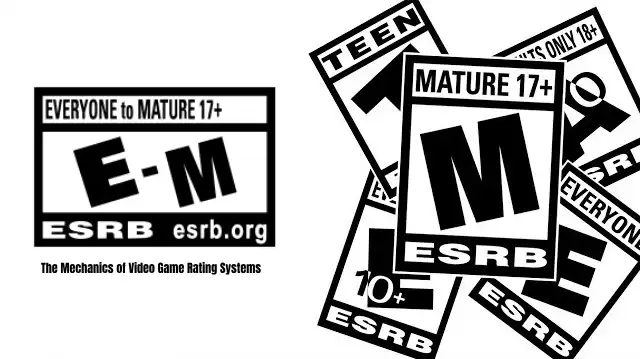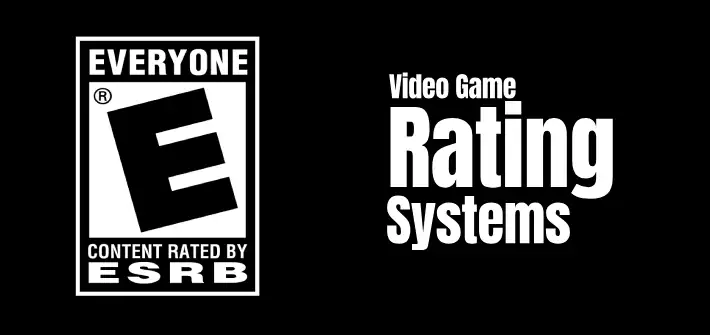Introduction to Video Game Rating Systems
In the expansive realm of interactive entertainment, video game rating systems play a pivotal role in guiding consumers toward content that aligns with their preferences and values. This comprehensive exploration delves into the purpose, significance, and mechanics of these rating systems, shedding light on their impact on the gaming industry and the broader gaming community.
Understanding the Purpose
1. Consumer Guidance
Video game rating systems exist primarily to provide consumers with vital information about the content of a game. Whether it’s intense violence, suggestive themes, or strong language, these ratings act as signposts, helping players make informed decisions.
2. Protecting Vulnerable Audiences
With a commitment to protecting younger audiences, rating systems aim to prevent exposure to inappropriate content. By categorizing games based on their suitability for different age groups, these systems empower parents to make informed choices for their children.
The Significance of Video Game Ratings
1. Industry Compliance
For game developers and publishers, adherence to rating guidelines is crucial. A game’s rating can influence its marketability and reach, prompting industry professionals to navigate the creative process while considering these parameters.
2. Consumer Trust and Confidence
The presence of a rating instills trust and confidence in consumers. Knowing that a game has undergone a thorough evaluation contributes to a positive gaming experience, aligning with the player’s expectations.

The Mechanics of Video Game Rating Systems
ESRB (Entertainment Software Rating Board)
1. Overview
The ESRB, a widely recognized rating system in North America, employs a straightforward approach. Ratings range from “Early Childhood” to “Adults Only,” encompassing various descriptors to provide nuanced details about the game’s content.
2. Descriptors
ESRB descriptors offer additional insights into the game’s content, such as “Violence,” “Sexual Content,” and “Strong Language.” Understanding these descriptors is crucial for a comprehensive grasp of a game’s thematic elements.
PEGI (Pan European Game Information)
1. Regional Scope
Operating in Europe, PEGI employs a similar age-based rating system. It categorizes games into age groups, ensuring that content is aligned with the maturity level of the intended audience.
2. Content Descriptors
PEGI utilizes content descriptors, akin to the ESRB, to provide concise information about specific elements within a game. These descriptors contribute to a more nuanced understanding of the gaming experience.
Other Rating Systems
1. CERO (Computer Entertainment Rating Organization)
CERO, Japan’s game rating organization, adopts a unique approach, combining age-based categories with content descriptors. This section provides an overview of CERO’s system and its impact on the Japanese gaming landscape.
2. Australian Classification Board
Exploring the classification system in Australia, this segment outlines how the Australian Classification Board assigns ratings and communicates information about game content.
Challenges and Controversies in Video Game Rating
1. Subjectivity in Rating
The subjective nature of rating games can lead to discrepancies in interpretation. This section delves into the challenges posed by subjective assessments and the potential impact on consumers.
2. Controversial Ratings
Examining instances where video game ratings sparked controversy, including debates on censorship, artistic expression, and the line between virtual and real-world violence.
The Future of Video Game Rating Systems
1. Adaptation to Evolving Technology
As technology evolves, so do the challenges in rating emerging forms of interactive entertainment. This portion speculates on how rating systems might adapt to virtual reality, augmented reality, and other evolving technologies.
2. Global Harmonization
Considering the global nature of the gaming industry, there’s a growing need for harmonized rating standards. This segment explores potential initiatives toward global standardization in video game rating.
Conclusion
In conclusion, video game rating systems serve as crucial navigational tools in the diverse and dynamic landscape of interactive entertainment. As technology advances and the gaming community evolves, these systems play an integral role in fostering a responsible and enjoyable gaming experience for players of all ages.




I’ll immediately snatch your rss as I can not to find your e-mail subscription link or newsletter service. Do you have any? Kindly let me recognize so that I may subscribe. Thanks.
Unfortunately, I don’t have an email subscription link or newsletter service available at the moment. If you have any other questions or need further assistance, feel free to ask. Thank you for your interest.
This service is perfect for boosting your local business’ visibility on the map in a specific location.
We provide Google Maps listing management, optimization, and promotion services that cover everything needed to rank in the Google 3-Pack.
More info:
https://www.speed-seo.net/ranking-in-the-maps-means-sales/
Thanks and Regards
Mike Derrick
PS: Want a ONE-TIME comprehensive local plan that covers everything?
https://www.speed-seo.net/product/local-seo-bundle/
online casino nederland nieuw online casino nederland nieuw .
Thanks for sharing this detailed list of online casinos in the Netherlands! 🎰 .
Приобрести диплом ВУЗа по невысокой цене можно, обращаясь к проверенной специализированной компании. Мы готовы предложить документы высших учебных заведений, расположенных в любом регионе РФ. negreenorchid.com/kupit-diplom-bystro-i-prosto-164
мостбет мобильная версия mostbet8008.ru .
мостбет ком вход http://www.mostbet8009.ru .
Купить диплом любого университета!
Мы можем предложить дипломы психологов, юристов, экономистов и прочих профессий по приятным тарифам— study-link.ru
Заказать диплом на заказ можно используя сайт компании. aurorahousings.com/profile/audramatos921
1.win зеркало https://1win8009.ru/ .
вход 1вин https://1win8019.ru/ .
Мы изготавливаем дипломы любых профессий по разумным ценам. Мы предлагаем документы техникумов, расположенных в любом регионе России. Дипломы и аттестаты выпускаются на “правильной” бумаге самого высшего качества. Это позволяет делать настоящие дипломы, не отличимые от оригиналов. mongolsmc.listbb.ru/viewtopic.phpf=1&t=1587
промокод 1win при регистрации http://1win8018.ru .
Диплом ВУЗа России!
Без присутствия диплома очень нелегко было продвигаться по карьере. В связи с этим решение о покупке диплома следует считать выгодным и целесообразным. Приобрести диплом о высшем образовании altasugar.it/new/index.php?option=com_kunena&view=topic&catid=3&id=153743&Itemid=151
Мы изготавливаем дипломы любой профессии по доступным ценам.– diplomh-40.ru/kupit-ofitsialnij-diplom-s-zaneseniem-v-reestr/
Заказать диплом академии!
Мы изготавливаем дипломы психологов, юристов, экономистов и других профессий по приятным тарифам. Вы приобретаете диплом в надежной и проверенной компании. : neoncity.gtaserv.ru/viewtopic.php?f=38&t=2878
Заказать диплом ВУЗа по выгодной стоимости вы можете, обращаясь к надежной специализированной компании. Заказать документ ВУЗа можно в нашем сервисе. justvoip.listbb.ru/viewtopic.phpf=2&t=2011
portofele electronice casino https://1win5054.ru .
ваучер 1win телеграм https://1win8020.ru/ .
1win casino официальный сайт скачать 1win5057.ru .
1 win зеркало на сегодня http://1win8010.ru/ .
1win официальный сайт вход http://1win5055.ru .
1 win вход https://1win5056.ru/ .